The Book of Trades by Jost Amman, 1588
The Book of Trades by the prolific German Renaissance artist Jost Amman (1539-91). Suits are books, printers' pads, wine-pots and drinking cups.
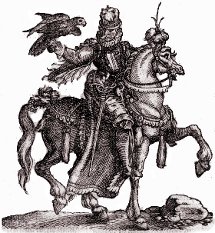
Jost Amman, “Book of Trades”, 1588
Following in the wake of Italian art, the German Renaissance developed a new form of medieval knightly culture. Imaginative decks of playing cards were produced by Jost Amman, Schäufelein, Schön and Peter Flötner...
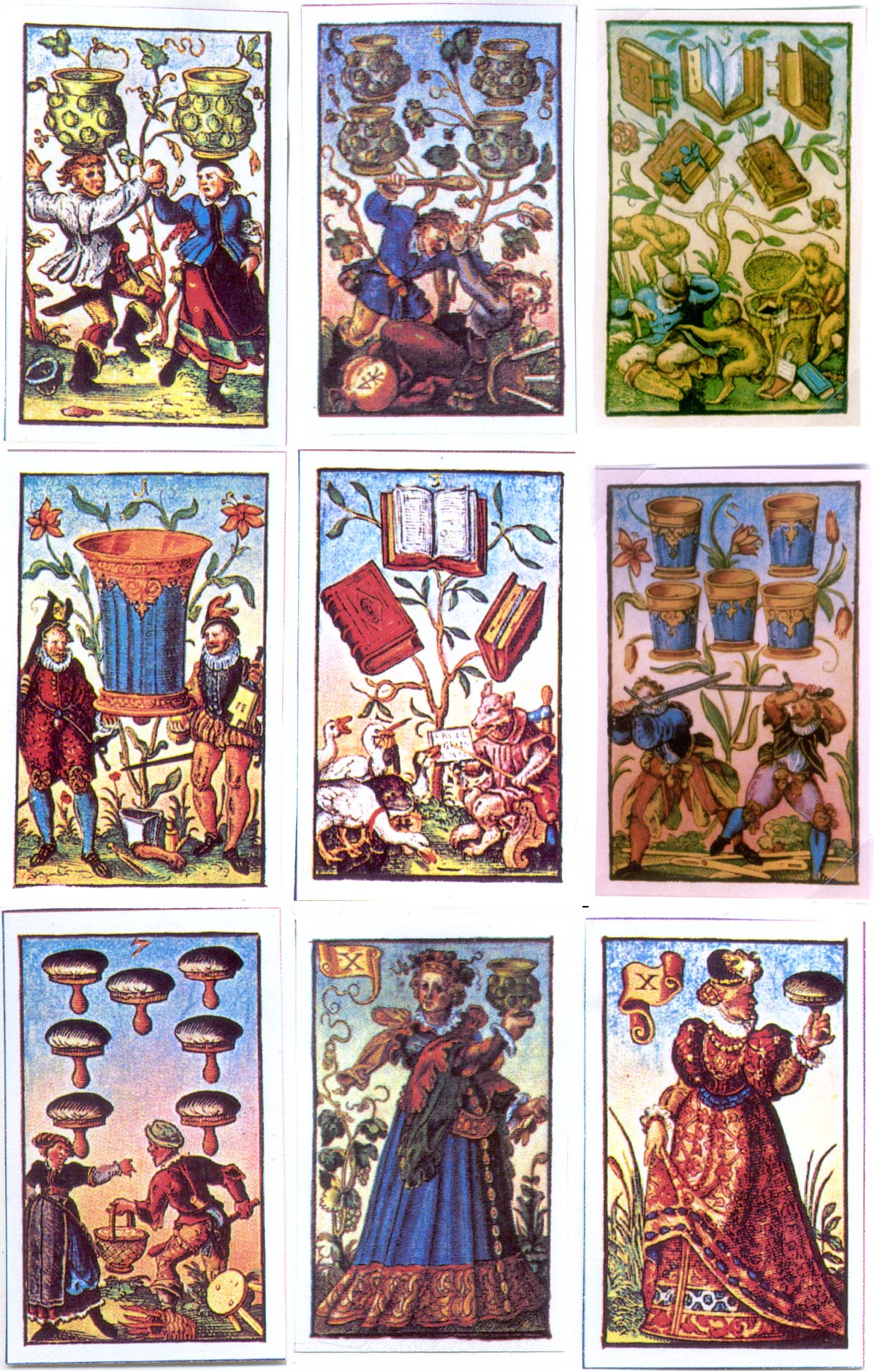
Above: cards from the Book of Trades by the prolific German Renaissance artist Jost Amman (1539-91). Suits are books, printers' pads, wine-pots and drinking cups. Some of the images had already appeared in books published prior to the cards, along with moralising verses beneath each card. The deck promotes industry and learning over idleness and drunkenness.
"Indulging their fancy, they [German card-makers] varied the signs according to every capricious notion: unicorns, dogs, rabbits and apes, monkeys and lions, parrots and peacocks, stroll or fly or flutter through the cardboard world. Packs appeared with suits of pinks, of columbines, printers' inkpads, vases, drinking cups, books, combs, fishes, crowns, bellows, frying-pans, shields, alms-houses and knives; some were circular." Roger Tilley 'Playing Cards', p. 35.
The artist's humour is discernible in almost every card, where little groups of figures decorate the numeral cards. Jost Amman's cards influenced several later cardmakers. Below are two recent facsimiles read more►
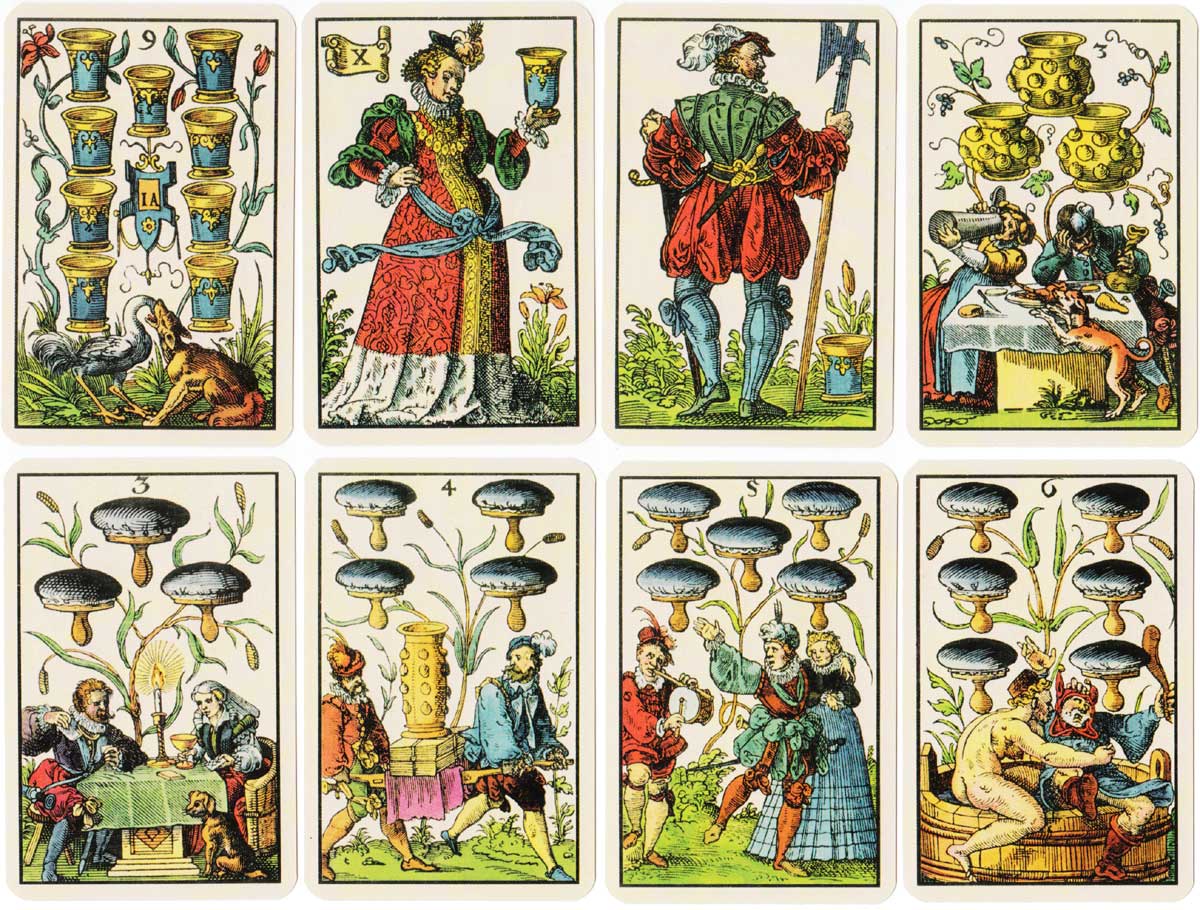
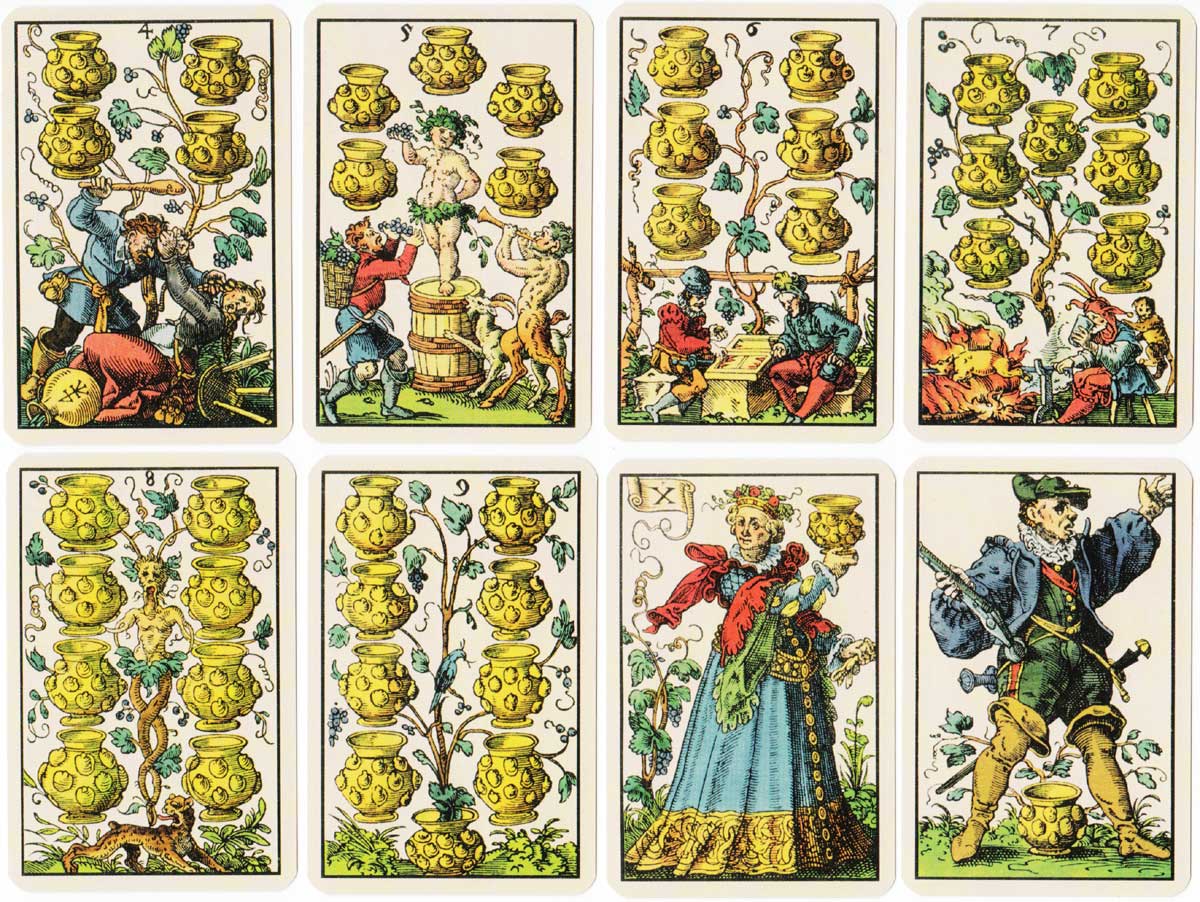
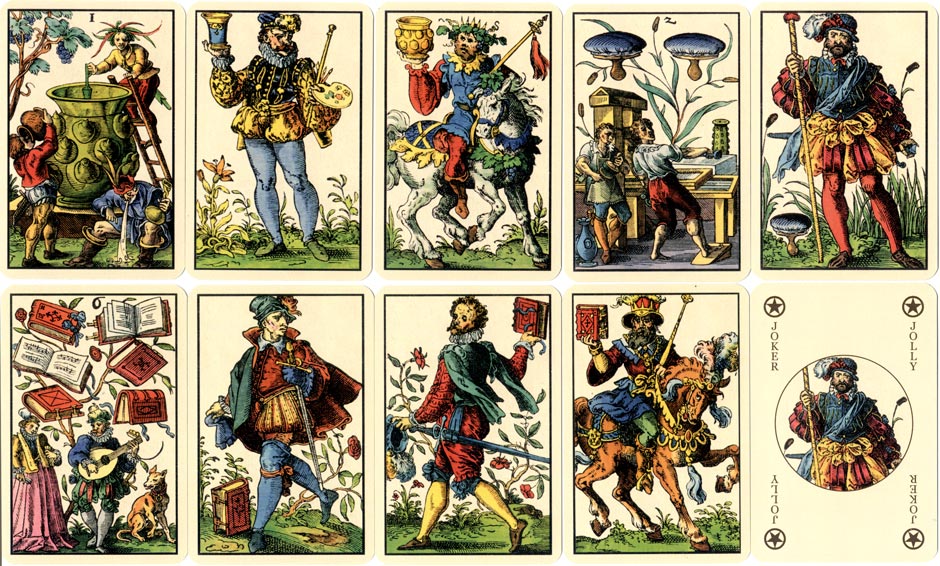
Above: cards from facsimile edition “The Book of Trades” by Jost Amman (1588) published by Lo Scarabeo, Torino, Italy 2004. This modern edition contains 2 jokers and six extra information cards see more →
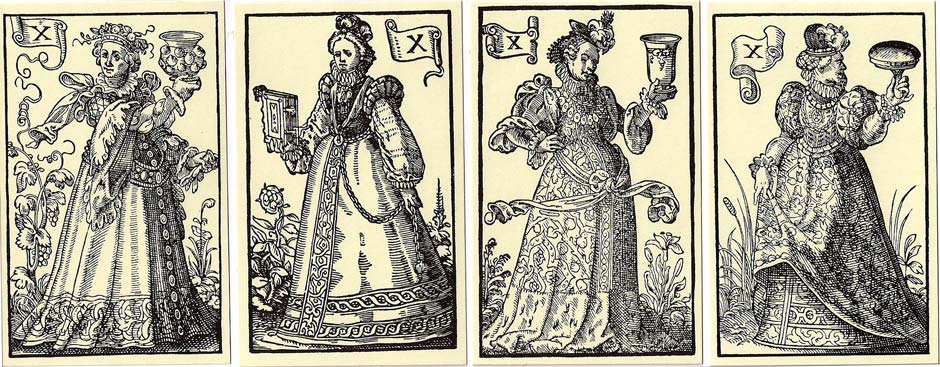
Above: the four cards designated by the Roman numeral 'X' are female. Are these 'Queens' or female pages? German decks, like Spanish ones, do not usually contain Queens. The Kings are mounted on horseback. If these ladies are Queens then we have an Italian or French element to account for. But in Spanish decks the 10s are 'Sotas' and sometimes female. Cards from the limited edition facsimile deck published by Edizone Il Meneghello, Via Fara 15, Milano, Italy.

By Simon Wintle
Member since February 01, 1996
I am the founder of The World of Playing Cards (est. 1996), a website dedicated to the history, artistry and cultural significance of playing cards and tarot. Over the years I have researched various areas of the subject, acquired and traded collections and contributed as a committee member of the IPCS and graphics editor of The Playing-Card journal. Having lived in Chile, England, Wales, and now Spain, these experiences have shaped my work and passion for playing cards. Amongst my achievements is producing a limited-edition replica of a 17th-century English pack using woodblocks and stencils—a labour of love. Today, the World of Playing Cards is a global collaborative project, with my son Adam serving as the technical driving force behind its development. His innovative efforts have helped shape the site into the thriving hub it is today. You are warmly invited to become a contributor and share your enthusiasm.
Related Articles

CARD-AB Miltenberg
Illustrations by Rita Stern depicting notable landmarks and scenes from the town of Miltenberg in Ge...

New Altenburg Skat cards – German DDR Pattern
Authentic Altenburger Skat cards with German suits (Acorns, Hearts, Leaves, Bells).

German Travel Cards
A travel-themed educational deck helping American tourists visiting Germany.

Briefmarken-Quartett
Quartet game featuring postage stamps from the Zones of Occupation in post-WWII Germany.

22 Pittori in 22 Arcani
Collaborative Tarot with contributions from 22 different Italian artists including Menegazzi and Tav...

IG Chemie Papier Keramik
Promotional pack designed by Karl-Heinz Schroers for a German trade union with comical bears on the ...

22 Artisti Liguri in 22 Arcani
Collaborative set of major arcana devoted to Christopher Columbus and his voyages of discovery.

Engel-Tarot
Set of major arcana designed by Alois Hanslian depicting angels throughout.

Virgil Solis
Remarkable pack of 52 animal-suited playing-cards designed and etched by Virgil Solis.

Politiker-Skat by Bubec
Caricatures of world leaders, including many German politicians, by the artist Bubec.

Le Poker Politique
French politicians and various world leaders caricatured by the German artist Bubec.

Dylan Dog
Characters and objects from the Italian comic book series Dylan Dog, written by Tiziano Sciavi and d...

Royal Britain
Pack devised by Pietro Alligo depicting English monarchs from Alfred the Great to Elizabeth II.

Unimog UX 100
Cartoons promoting the Unimog UX 100, a small truck produced by Mercedes-Benz.

Juristenskat
Caricatures of lawyers and judges by Philipp Heinisch for HEEL Verlag.

Battles in Mexico, 1847
Uncut proof sheet with Mexican Battle scenes on the aces and portraits of American generals on the c...
Most Popular
Our top articles from the past 28 days

